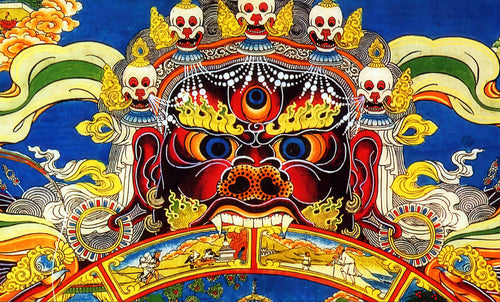
Naikan Zen as a Practice of Harmonious Well-Being
Leonardo AnfolsiNaikan Zen brings its practitioners harmonious well-being, continuous joy, the firmest aid in healing, and encourages the highest spiritual realization.
Naikan Zen - practiced by Chinese and Japanese Zen monks - is a form of yogic asceticism :
- of the mind, as it works together with visualizations and the breath,
- of energy, by encouraging the flow of emotional/nervous/pranic energy and respiratory/bioelectrical/qi force,
- of the body, since it uses particular movements and breathing, thus allowing the development of Bioelectric and Staminal Strength.
While due to the materialistic mentality we develop external technological prostheses and medicines that act in place of our ability to react, Naikan Zen encourages us to make ourselves ardour, strength, source knowledge and freedom.
Zen Naikan is a gift that comes from the Rinzai school of Zen Buddhism ; from monks and lay people dedicated to the realization of the strength of the spirit, mind, energy and body.
Naikan summarizes the essence of yoga by working with the five prana, and the essence of qigong by working with jing and qi to realize shen.
The word naikan was used specifically by Master Hakuin Ekaku , only three centuries ago, to define a method of energy cultivation associated with a new concept of dynamic meditative practice, suitable for both lay people, who lead an active life in society, and practicing monks.
The Zen Naikan we are talking about is not the naikan devised by Yoshimoto Ishin - whom we certainly respect - but the alchemical training taught for millennia in the Rinzai school of Zen.
At the age of eighteen, in 1977, I had the honor of being welcomed into sanzen - the secret room where koans are debated - by Master Luigi Mario Engaku Taino in the Zenshinji temple , and two years later I was also welcomed into sanzen by Master Yamada Mumon ; it was in this very place that I had the clear experience of what the strength of thedantien could be, made manifest in an eighty-year-old man, who had also been ill since his youth. Everyone remembers Master Mumon for his inexhaustible staminal energy, despite having only one functioning lung, and for how much power he expressed with his ki-tentai , that is, with the manifestation of his qi .
The adjective stem defines the germinal and constitutive principle of living organisms of every kingdom, from plants to animals, up to humans.
The etymology Staminale evokes in its radicals, derived from the Greek and Latin languages, something structural and ancestral, evoking the concepts of being , of supporting structure , of fulcrum and of thread . The stem cell can really be considered a primordial fulcrum, a structure or the thread of the fabric of life, just as the bioelectric tension is a fulcrum and is, in its flow, the energetic thread that is at the base of life and our well-being, moving every function in the cell, in the tissues and in the organs. We add that the latest scientific research regarding the extrapyramidal nervous system , the enteric nervous system , epigenetics and the formulation of the concept of resilience do nothing but reconfirm, according to the contemporary scientistic approach, the correctness of the principles that constitute the ancient Naikan method.
We can certainly say that naikan develops our immune capacity - that is, adaptogenic - and that it is a technique of rapid use with which we can achieve those tangible facts - commonly defined as miracles - that I have witnessed every day of my life; certainly these experiences serve to encourage us but they must not in any way distract us from the inner search but, rather, nourish it by opening ourselves to wonder in an innocent and responsible way.
By practicing and studying the methods of Zen of both the Rinzai school ( línjì ) and the Soto school ( caodong ), as well as Vajrayana and Dzogchen Tantrism, I began to appreciate more and more the synthetic genius of Hakuin.
We also emphasize that, according to Hakuin, naikan was also taught to lay people, a fact that encourages us not to want to keep a secret that not even Hakuin wanted to hide but - as the current Dalai Lama advised us - to offer those who are ready the opportunity to develop themselves.
Improving ourselves for a better world.
Leonardo Anfolsi
















































